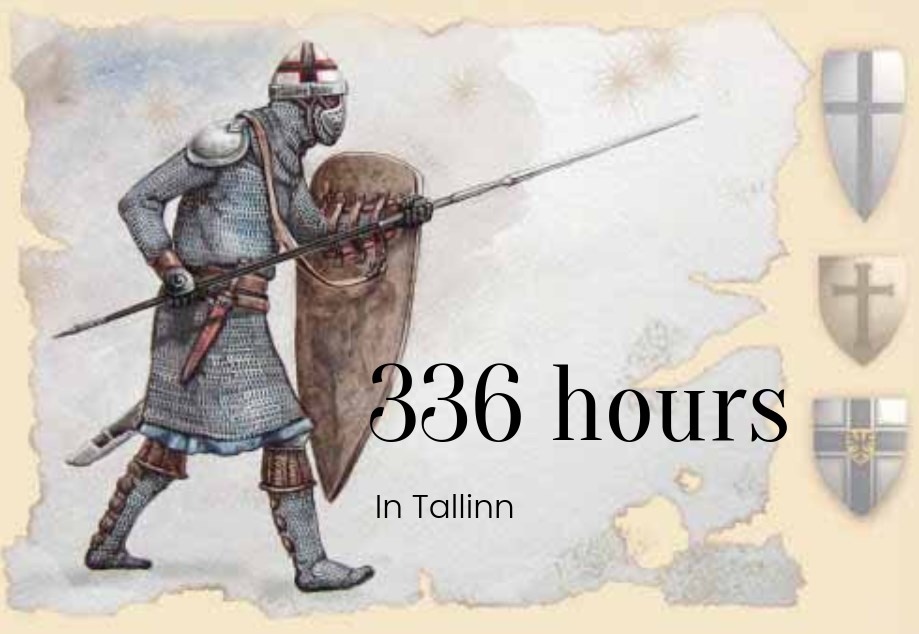Mind the gap
Every town of a certain size has that neighborhood ― the one that ostensibly acts as a bulwark against the bullies and reactionaries it sees as the lamentable norm. In Tallinn, that corner would appear to be Telliskivi, a nice place to walk around on something other than cobblestones, and grab a snack and craft beer in one of its repurposed warehouses.
This hulking, abandoned water tower standing next to unused railroad tracks roughly marks the spot. I'd argue its very abandonment is less a source of melancholy than it is of raw exhilaration (the spray-paint artists make these byways the city's most colorful) ― a point that Tom from Hidden Tallinn comes very close to making in his earnest essay on the tower itself.
I do like to take pictures of posters in the faint hope they will prove useful in some far-off research project or at least in settling a bet ("I told you Juudit was staged in 2022, you idiot!").
I began to lose Telliskivi's plot when I popped into Fotografiska, one of those amorphous "meeting places" where "art, music, food and free inquiry combine to promote equity, inclusion and sustainability." I made that line up but wouldn't be surprised if Fotografiska's founders read it and nodded their heads.
What is undeniably true is that it would cost me 12 euros to climb the stairs next to the gift shop ... to find what I do not know, but something that, verbatim, promised to "inspire a more conscious world." In an act of comradeship, Fotografiska's retail neighbor, Rock Paper Scissors, extends the promise of "Food, booz [sic] & justice" ― and not your garden-variety justice, mind you, but "100% gluten-free" justice. I shit you not. We may be more politically aligned than you could know, you rascals, but I honestly do not know what you are trying to say.
Stick with me here, please, because I feel a point coming on. This very ancient building with creaky floorboards houses the Estonian Museum of Applied Art & Design ...
It is featuring an exhibit on knotted long-piled carpets known as rya rugs, an old Nordic craft that a handful of textile artists took up in the middle of the 20th century in order to create freer, more abstract works than their rug-making predecessors would allow. The results will be here to see through the end of May 2022.
Making stuff is hard. These showpieces do not create themselves. The museum helpfully displays the painstaking groundwork involved, including these sketches by Adamson.
Upstairs are many midcentury marvels. My late friend Steve Hachen, a compulsive collector who had a roped-off George Nelson marshmallow sofa in his home, would have lost his mind in this room.
A Bruno Tomberg armchair from 1972:
The Estonia-4 radio with pull-out record player (1963), designed by Erik-Arne Uustalu, who went to work at the Punane (Red) RET electronics factory after his advanced studies in the metal arts.
The popular cognac, or cup, chair (1966), designed by Eero Aarnio.
The Mari high chair (2009) by Julia-Maria Kunnap.
A Maile Grunberg armchair from 1989.
Going to school is hard, especially when your alarm beeps in the dark while ready-made slush is falling from the sky in Tallinn (the Weather Channel is calling it a "wintry mix"). Learning about theory, materials and their tolerances is hard.
Going to work is hard. Failing and trying again, spending tens of thousands of hours developing the remembered movements of the craftsman is something I would not expect a person who thinks it's clever to juxtapose "booz" and "justice" to appreciate. At this point in history, a pronounced gap separates those who can produce useful things and those who can articulate only fuzzy aspirations. At the very least we can all resolve to make ourselves more clearly understood. Anyway, that's what I've been thinking about as I freeze my ass off roaming this Gothic snow globe.
Next






















